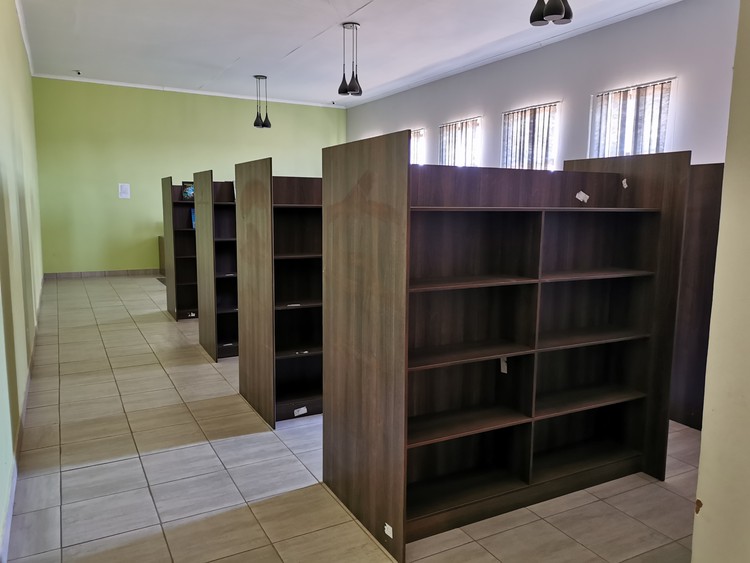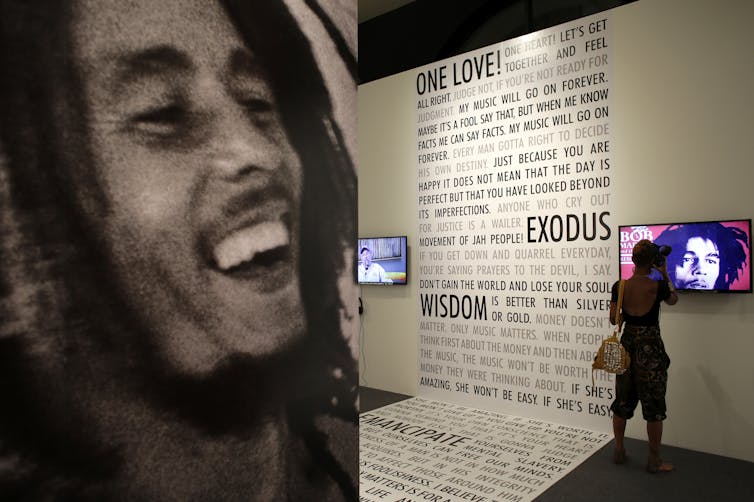#DodgyLottery part three: R20 million has been spent on the Credo Mutwa Museum and Library, with very little to show for it
Even
though the National Lotteries Commission has pumped over R19.6 million
into a library and museum complex to celebrate the life and work of one
of Kuruman’s most famous sons, there is very little other than a
building to show for it.
Two companies, PKT Consulting Engineers and Kaone Wethu, which were involved in the construction of the complex have links to NLC Chief Operating Officer Phillemon Letwaba and members of his family.
Read also:
The complex is intended to preserve the heritage of the world-famous sangoma, author, and African storyteller, Credo Mutwa, now 98 and sickly, who lives across the road from the newly-built brick building.“In 2017, the NLC approved funding for the library and museum for the preservation and display of the work of Dr Vusamazulu Credo Mutwa, a well-known African healer, shaman and a writer. The establishment will contribute to the documentation and preservation of the indigenous knowledge systems (IKS) of South Africa,” the NLC said in a media statement late in February this year, shortly before the centre was opened.
At the height of Mutwa’s fame, famous people and celebrities, including Nelson Mandela, Princess Diana and her brother, Earl Charles Spencer, sought Mutwa’s counsel.
But despite the NLC’s stated plans, the museum building is largely an empty shell and negotiations with Mutwa’s family to display his work and the collection of books, artefacts and art he has collected over a lifetime are yet to bear fruit.
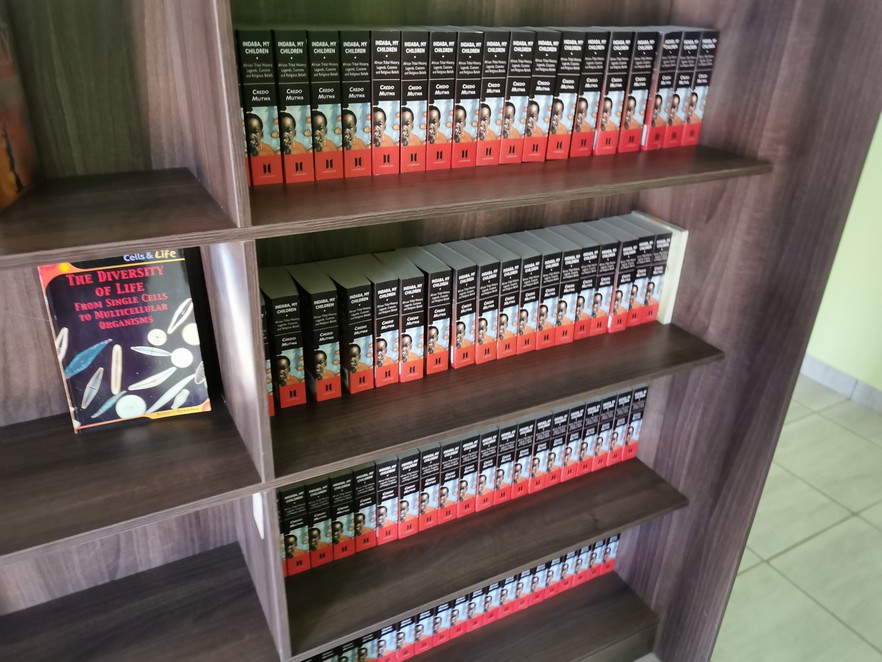
To be fair not every bookshelf is empty. The left
bookshelf pictured above is filled with copies of Mutwa’s seminal work
Indaba My Children. Photo: Raymond Joseph
The only exhibit in the museum is a travelling one consisting of a series of illustrated banners that tell the history of the Northern Cape. It is on loan from the McGregor Museum in Kimberley.
There is also an audio-visual presentation of an SABC series about Mutwa, which is played when people visit the museum. In spite of the millions from the Lottery, curator Asandiswa Manatha says that funds are not yet available to stock the museum with exhibits.
In the library section, there is only one rack with any books – including several shelves of copies of Mutwa’s seminal work, Indaba My Children, and an eclectic mix of paperbacks and some children’s books. The rest of the shelves are bare and gathering dust, apparently because there are no funds to stock the library.
The NLC says it will continue to support the museum and the library, after spending almost R20 million on the building.
“The NLC has funded the construction of the museum in honour of Credo Mutwa,” NLC spokesman Ndivhuho Mafela said in response to emailed questions.
“We have handed over the facility to the community and we are informed that curators are appointed to assist the facility. The Commission will continuously provide support where necessary and required to ensure that the facility fully operates to its potential.”
After GroundUp published Part One of this series on Friday, the NLC released a statement saying:
“The Credo Mutwa Museum has since been completed and handed over to the community. The NLC is assisting the community and the appointed curators to finalise issues surrounding intellectual property of Sanusi Credo Mutwa.”
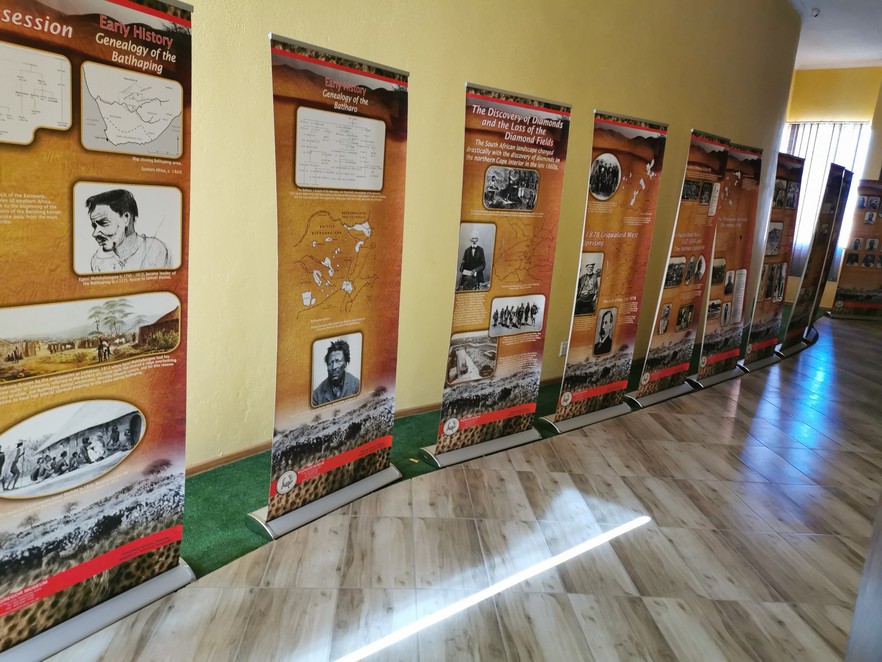
This travelling exhibit is the only display in the
museum. It tells the history of the Northern Cape and is on loan from
the McGregor Museum in Kimberley. Photo: Raymond Joseph
For the record
As this reporter’s tour of the facility was ending, I was confronted by local activist Sandra Melato, who earlier in my investigation, had complained during phone calls with me of “corruption” involving the museum and some other NLC projects in Kuruman. She told me that her life was “in danger” because she had spoken out about corruption.But now she accused me of being “against black development”, saying: “When the NLC gives money to white people you do and say nothing, but when they help blacks you say they are corrupt.”
Mafela said that Melato had made “serious allegations of intimidation” against me.
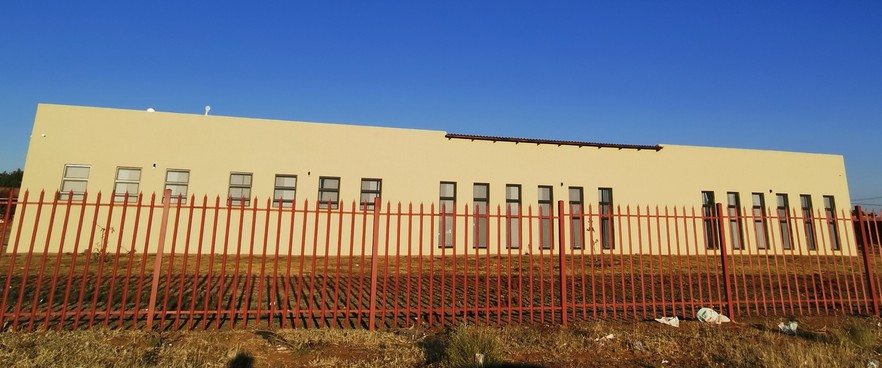
R20 million of Lottery money has gone to the Credo Mutwa museum and library in Kuruman. Photo: Raymond Joseph
